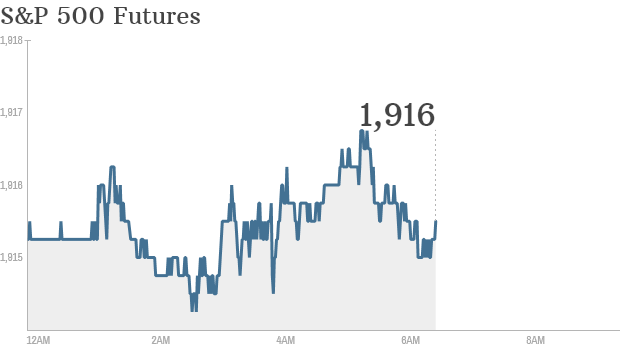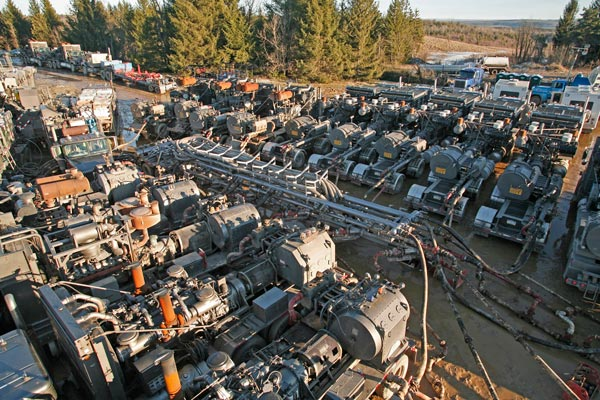Best Construction Material Companies To Own For 2015: CEMEX SAB de CV (CX)
CEMEX, S.A.B. de C.V. (CEMEX), incorporated on January 20, 1931, is a global cement manufacturer with operations in North America, Europe, South America, Central America, the Caribbean, Africa, the Middle East and Asia. The Company is a holding company engaged through the operating subsidiaries in the production, distribution, marketing and sale of cement, ready-mix concrete, aggregates and clinker. As of December 31, 2009, the Companys cement production facilities were located in Mexico, the United States, Spain, the United Kingdom, Germany, Poland, Croatia, Latvia, Colombia, Costa Rica, the Dominican Republic, Panama, Nicaragua, Puerto Rico, Egypt, the Philippines and Thailand.
The Company manufactures cement through a closely controlled chemical process, which begins with the mining and crushing of limestone and clay, and, in some instances, other raw materials. The clay and limestone are then pre-homogenized, a process which consists of combining diffe rent types of clay and limestone. The mix is typically dried, then fed into a grinder, which grinds the various materials in preparation for the kiln. The raw materials are calcined, or processed, at a very high temperature in a kiln, to produce clinker. Clinker is the intermediate product used in the manufacture of cement.
Ready-mix concrete is a combination of cement, fine and coarse aggregates, admixtures (which control properties of the concrete including plasticity, pumpability, freeze-thaw resistance, strength and setting time), and water. The Company is a supplier of aggregates primarily the crushed stone, sand and gravel, used in virtually all forms of construction.
Mexican Operations
During the year ended December 31, 2009, the Mexican operations represented approximately 21% of the Companys net sales. CEMEX Mexico is a direct subsidiary of CEMEX and is both a holding company for some of the operating ! companies in Mexico a nd an operating company involved in the manufacturing and ma! rketing of cement, plaster, gypsum, groundstone and other construction materials and cement by-products in Mexico. CEMEX Mexico, indirectly, is also the holding company for the international operations. The Company owns Tolteca, Monterrey, Maya, Anahuac, Campana, Gallo, and Centenario brands in Mexico. As of December 31, 2009, the Company owned 100% of CEMEX Mexico.
The Company competes with Holcim Ltd., Sociedad Cooperativa Cruz Azul, Cementos Moctezuma, Grupo Cementos Chihuahua and Lafarge Cementos in Mexico.
U.S. Operations
As of December 31, 2009, the Companys operations in the United States represented approximately 19% of the Companys net sales. As of December 31, 2009, the Company held 100% of CEMEX, Inc. As of December 31, 2009, CEMEX had a cement manufacturing capacity of approximately 17.9 million tons per year in the United States operations. As of December 31, 2009, the Company operated 14 cement plants located in Al abama, California, Colorado, Florida, Georgia, Kentucky, Ohio, Pennsylvania, Tennessee and Texas. As of December 31, 2009, it also had 48 rails or water served active cement distribution terminals in the United States. As of December 31, 2009, the Company had 336 ready-mix concrete plants located in the Carolinas, Florida, Georgia, Texas, New Mexico, Nevada, Arizona, California, Oregon and Washington and aggregates facilities in North Carolina, South Carolina, Arizona, California, Florida, Georgia, Kentucky, New Mexico, Nevada, Oregon, Texas, and Washington.
Spanish Operations
As of December 31, 2009, the operations in Spain represented approximately 5% of the Companys net sales. As of December 31, 2009, the Company held approximately 99.8% of CEMEX Espana, the main operating subsidiary in Spain. The cement activities in Spain are conducted by CEMEX Espana. The ready-mix concrete activities in Spain are conducted by Hormicemex! , S.A., a! subsidiar y of CEMEX Espana, and the aggregates activities in Spain ar! e conduct! ed by Aricemex S.A., also a subsidiary of CEMEX Espana.
U.K. Operations
As of December 31, 2009, the Companys operations in the United Kingdom represented approximately 8% of the Companys net sales. As of December 31, 2009, it held 100% of CEMEX Investments Limited, the holding subsidiary in the United Kingdom. The Company is a provider of building materials in the United Kingdom with vertically integrated cement, ready-mix concrete, aggregates and asphalt operations. It is also a provider of concrete and precast materials solutions, such as concrete blocks, concrete block paving, roof tiles, flooring systems and sleepers for rail infrastructure.
The Company competes with Lafarge, Heidelberg, Tarmac, and Aggregate Industries in the United Kingdom.
German Operations
As of December 31, 2009, the operations in the Rest of Europe consisted of the operations in Germany, France, Ireland, Poland, Croatia, the Czech Republic, Latvia, Austria and Hungary, as well as the other European assets. The Company is a provider of building materials in Germany, with vertically integrated cement, ready-mix concrete, aggregates and concrete products operations (consisting mainly of prefabricated concrete ceilings and walls). It maintains a network for ready-mix concrete and aggregates in Germany. As of December 31, 2009, the Company held 100% of CEMEX Deutschland AG, the holding subsidiary in Germany.
The Company competes with Heidelberg, Dyckerhoff, Lafarge, Holcim and Schwenk in Germany.
French Operations
As of December 31, 2009, the Company held 100% of CEMEX France Gestion (S.A.S.), the holding subsidiary in France. It is a ready-mix concrete producer and aggregate producer in France. As of December 31, 2009, the Company operated 239 ready-mix concrete plants in France, one maritime cement terminal located in LeHavre, on the ! northern ! coast of Franc e, 20 land distribution centers and 42 aggregates quarries.
The Company competes with Lafarge, Holcim, Italcementi, Vicat, Lafarge, Italcementi, Colas (Bouygues) and Eurovia (Vinci) in France.
Irish Operations
As of December 31, 2009, the Company held approximately 61.2% of Readymix Plc, the operating subsidiary in the Republic of Ireland. The operations in Ireland produce and supply sand, stone and gravel, as well as ready-mix concrete, mortar and concrete blocks. As of December 31, 2009, we operated 43 ready-mix concrete plants, 27 aggregates quarries and 15 block plants located in the Republic of Ireland, Northern Ireland and the Isle of Man. The Company imports and distributes cement in the Isle of Man.
The Company competes with CRH, the Lagan Group and Kilsaran in the Republic of Ireland.
Polish Operations
As of December 31, 2009, the Company held 100% of CEMEX Polska Sp. z.o.o. (CEMEX Polska), the holding subsidiary in Poland. It is a provider of building mat erials in Poland serving the cement, ready-mix concrete and aggregates markets. As of December 31, 2009, CEMEX operated two cement plants and one grinding mill in Poland, with a total installed cement capacity of three million tons per year. As of December 31, 2009, the Company also operated 39 ready-mix concrete plants and nine aggregates quarries in Poland. As of December 31, 2009, the Company also operated 10 land distribution centers and two maritime terminals in Poland.
The Company competes with Heidelberg, Lafarge, CRH and Dyckerhoff in Poland.
Southeast European Operations
As of December 31, 2009, the Company held 100% of CEMEX Hrvatska d.d. (Hrvatska), the operating subsidiary in Croatia. As of December 31, 2009, it operated three cement plants in Croatia, with an installed capacity of 2.4 million tons per year. As of December 31, 2009, the Company also operated ten land distribution centers, th! ree marit! ime cement terminals, e ight ready-mix concrete facilities and one aggregates quarry! in Croat! ia, Bosnia and Herzegovina, Slovenia, Serbia and Montenegro.
Advisors' Opinion: - [By Monica Wolfe]
Cemex SAB de CV (CX)
As of the close of the third quarter there were nine guru owners of Cemex. These gurus held a combined weighting of 5.30%. During the third quarter, there were three gurus making buys and nine making sells of their stake in CX.
- [By Dan Caplinger]
Even now, though, it's far from clear whether the recent rebound has staying power. Earlier this month, peer Vulcan Materials (NYSE: VMC ) reported 5% lower shipments of aggregates, although rising prices helped offset the impact, and the company noted double-digit-percentage increases in shipments to hot housing areas including Arizona, California, and Florida. Similarly, Cemex (NYSE: CX ) posted a substantial loss for its March quarter on with 5% lower revenue, but the Mexican company pointed to strength in the U.S. and Asian markets as offsetting weakness in Mexico, Europe, and Latin America.
source from Top Penny Stocks For 2015:http://www.seekpennystocks.com/best-construction-material-companies-to-own-for-2015.html



 Popular Posts: 2 Downtrodden Stocks to Buy Today3 High-Yielders That Make MLPs a SnapShould You Jump on the AT&T-DirecTV Merger? Recent Posts: Should You Jump on the AT&T-DirecTV Merger? 2 Downtrodden Stocks to Buy Today 3 High-Yielders That Make MLPs a Snap View All Posts
Popular Posts: 2 Downtrodden Stocks to Buy Today3 High-Yielders That Make MLPs a SnapShould You Jump on the AT&T-DirecTV Merger? Recent Posts: Should You Jump on the AT&T-DirecTV Merger? 2 Downtrodden Stocks to Buy Today 3 High-Yielders That Make MLPs a Snap View All Posts  For good reasons, too. The old-fashioned wireline business has been shrinking inexorably. While broadband Internet and TV have provided new sources of revenue, the cable companies are fighting the telcos for every scrap of this business. Price cutting is pinching the telcos’ last fat profit center — wireless.
For good reasons, too. The old-fashioned wireline business has been shrinking inexorably. While broadband Internet and TV have provided new sources of revenue, the cable companies are fighting the telcos for every scrap of this business. Price cutting is pinching the telcos’ last fat profit center — wireless.
 MORE GURUFOCUS LINKS
MORE GURUFOCUS LINKS  589.47 (1y: +36%) $(function(){var seriesOptions=[],yAxisOptions=[],name='AAPL',display='';Highcharts.setOptions({global:{useUTC:true}});var d=new Date();$current_day=d.getDay();if($current_day==5||$current_day==0||$current_day==6){day=4;}else{day=7;} seriesOptions[0]={id:name,animation:false,color:'#4572A7',lineWidth:1,name:name.toUpperCase()+' stock price',threshold:null,data:[[1368680400000,434.578],[1368766800000,433.26],[1369026000000,442.93],[1369112400000,439.66],[1369198800000,441.354],[1369285200000,442.14],[1369371600000,445.15],[1369717200000,441.439],[1369803600000,444.95],[1369890000000,451.58],[1369976400000,449.735],[1370235600000,450.72],[1370322000000,449.31],[1370408400000,445.11],[1370494800000,438.46],[1370581200000,441.811],[1370840400000,438.89],[1370926800000,437.6],[1371013200000,432.19],[1371099600000,435.965],[1371186000000,430.05],[1371445200000,432],[1371531600000,431.77],[1371618000000,423],[1371704400000,416.838],[1371790800000,413.5],[1372050000000,402.54],[1372136400000,402.63],[1372222800000,398.07],[1372309200000,393.78],[1372395600000,396.53],[1372654800000,409.22],[1372741200000,418.49],[1372827600000,420.8],[1373000400000,417.42],[1373259600000,415.05],[1373346000000,422.35],[1373432400000,420.73],[1373518800000,427.288],[1373605200000,426.51],[1373864400000,427.44],[1373950800000,430.195],[1374037200000,430.31],[1374123600000,431.758],[1374210000000,424.95],[1374469200000,426.31],[1374555600000,418.99],[1374642000000,440.51],[1374728400000,438.5],[1374814800000,440.99],[1375074000000,447.79],[1375160400000,453.32],[1375246800000,452.53],[1375333200000,456.676],[1375419600000,462.54],[1375678800000,469.45],[1375765200000,465.25],[1375851600000,464.98],[1375938000000,461.01],[1376024400000,454.45],[1376283600000,467.36],
589.47 (1y: +36%) $(function(){var seriesOptions=[],yAxisOptions=[],name='AAPL',display='';Highcharts.setOptions({global:{useUTC:true}});var d=new Date();$current_day=d.getDay();if($current_day==5||$current_day==0||$current_day==6){day=4;}else{day=7;} seriesOptions[0]={id:name,animation:false,color:'#4572A7',lineWidth:1,name:name.toUpperCase()+' stock price',threshold:null,data:[[1368680400000,434.578],[1368766800000,433.26],[1369026000000,442.93],[1369112400000,439.66],[1369198800000,441.354],[1369285200000,442.14],[1369371600000,445.15],[1369717200000,441.439],[1369803600000,444.95],[1369890000000,451.58],[1369976400000,449.735],[1370235600000,450.72],[1370322000000,449.31],[1370408400000,445.11],[1370494800000,438.46],[1370581200000,441.811],[1370840400000,438.89],[1370926800000,437.6],[1371013200000,432.19],[1371099600000,435.965],[1371186000000,430.05],[1371445200000,432],[1371531600000,431.77],[1371618000000,423],[1371704400000,416.838],[1371790800000,413.5],[1372050000000,402.54],[1372136400000,402.63],[1372222800000,398.07],[1372309200000,393.78],[1372395600000,396.53],[1372654800000,409.22],[1372741200000,418.49],[1372827600000,420.8],[1373000400000,417.42],[1373259600000,415.05],[1373346000000,422.35],[1373432400000,420.73],[1373518800000,427.288],[1373605200000,426.51],[1373864400000,427.44],[1373950800000,430.195],[1374037200000,430.31],[1374123600000,431.758],[1374210000000,424.95],[1374469200000,426.31],[1374555600000,418.99],[1374642000000,440.51],[1374728400000,438.5],[1374814800000,440.99],[1375074000000,447.79],[1375160400000,453.32],[1375246800000,452.53],[1375333200000,456.676],[1375419600000,462.54],[1375678800000,469.45],[1375765200000,465.25],[1375851600000,464.98],[1375938000000,461.01],[1376024400000,454.45],[1376283600000,467.36],
 Markit
Markit  Bloomberg
Bloomberg  Eric Nelson of Servo Wealth Management goes through the grim numbers in his July newsletter to clients.
Eric Nelson of Servo Wealth Management goes through the grim numbers in his July newsletter to clients.